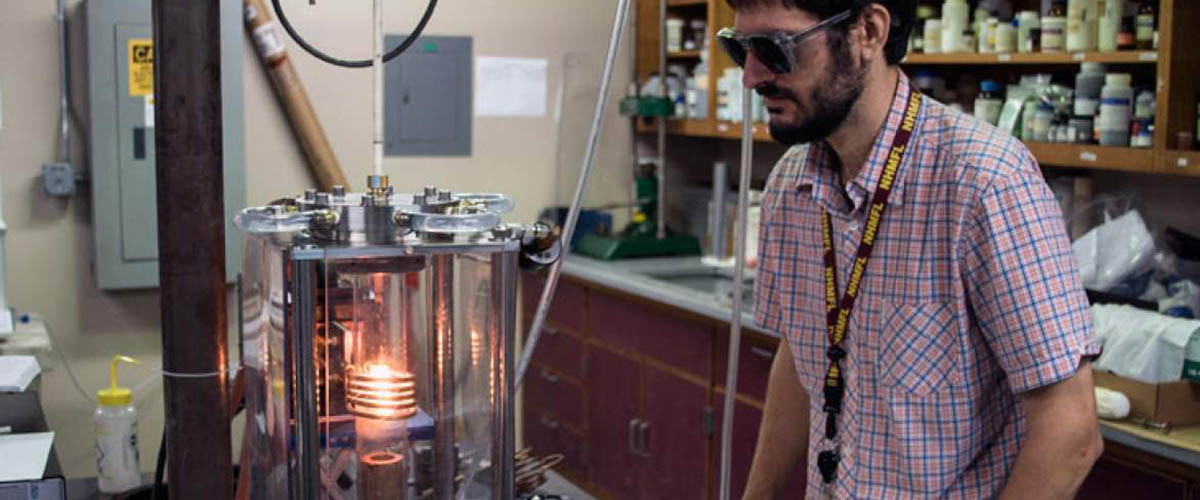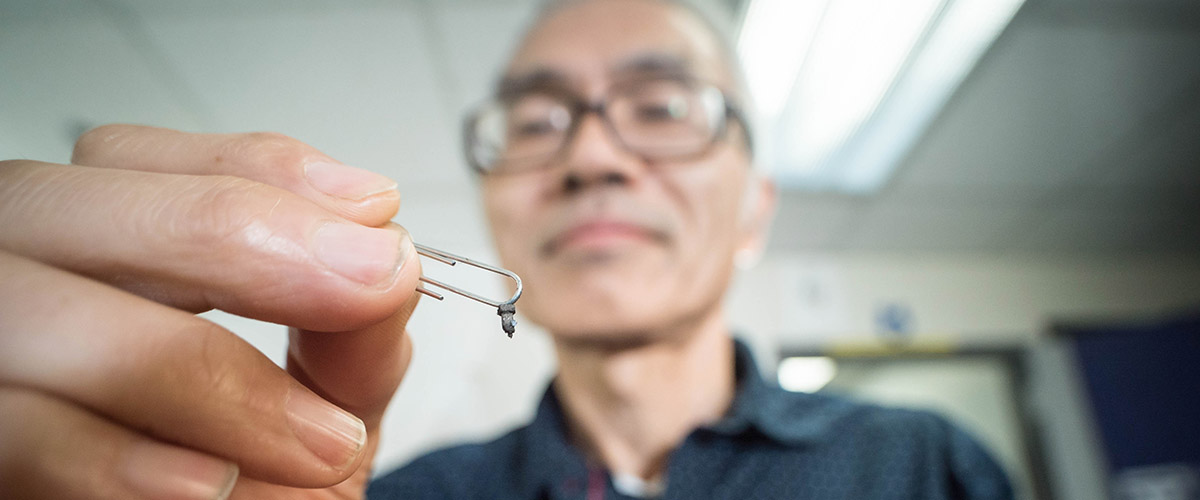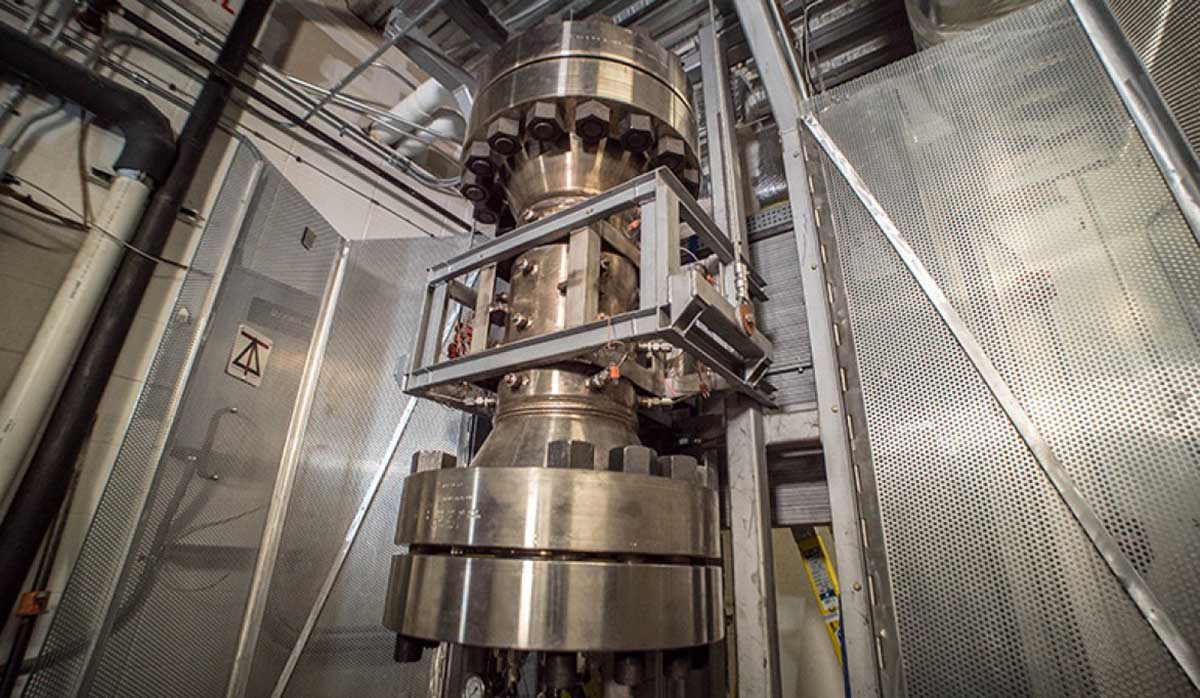Ryan Baumbach is master of the universes.
Not of the universe, mind you. He's an unassuming physicist, not a megalomaniac.
Rather, of the universes, plural. Not the one (or ones) that extend for light-years beyond our planet, but far tinier (though no less intriguing) universes found within crystalline materials.
A researcher at the National MagLab, Baumbach specializes in the art and science of designing and making crystals; dozens of researchers worldwide have used his crystals in their experiments. Achievements in their own right, they are also, more importantly, a means to study the fascinating physics happening inside.
Turns out crystals are great playgrounds for electrons, and for the physicists who study them. If, like Baumbach, you've got the brains of a physicist and the creativity of a chef, you can cook up all kinds of unique environments in which those tiny charged particles do the darndest things.
"An electron experiences a completely new universe whenever it enters a new solid state system," said Baumbach. So every crystal he makes is a potential discovery waiting to happen.
Let's take a closer look at how and why Baumbach and members of his research team in the MagLab's Condensed Matter Science Group forge different kinds of crystals, then analyze what's going on inside their lovely, latticed structures.
Fine-tuning a molecule
Scientists take different approaches to solving the problems of condensed matter physics (which is, as a MagLab physicist once put it, the science of "stuff" and how and its molecules behave).
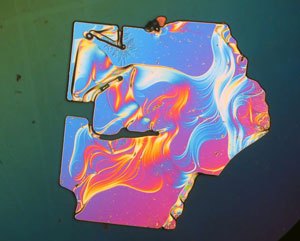
Single crystal specimen of URu2Si2 made in Baumbach's lab.
Some condensed matter physicists are predominantly theorists, using calculations, theories and computer programs to predict or figure out certain phenomena. Physicists like Baumbach, on the other hand, approach problems from a different angle, in his case a materials-driven approach. You could think of it as a kind of twist on the famous "Field of Dreams" adage: "Build it and they will … discover."
So first, Baumbach builds. He builds unique, atomic-level universes, then tries to fathom what his imagination and instruments have wrought.
First, he starts off with a magnetic material. Then he does a little chemical customizing, technically known as "tuning." He may substitute one molecule with another, or throw in something new, a technique called doping. It's a fine art, based on a deep understanding of what combination of ingredients and techniques are likely to yield something worth investigating.
"You could chemically substitute something with anything. I mean, the number of possible combinations is too large to ever explore completely," said Baumbach. "So you have to develop some sort of basic idea about what are the right tuning parameters."
Those parameters include both the ingredients as well as the way in which you cook them up.
"The simplest way to react something is to put it in a furnace and heat it up," said Baumbach. "But there are other ways."
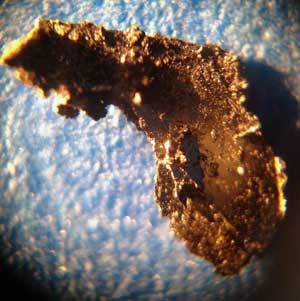
Grown in Baumbach's lab, this crystal of CeNi2Ge2 resembles, by chance, the state of Florida.
Image credit: Rhea Reyes and You Lai.
In fact, Baumbach has about 10 apparatuses for cooking crystals, some custom-made, that bake them in different ways, using focused light, radio frequency magnetic fields, and electrical current. For any given project, Baumbach knows not only which tool to use, but how best to deploy it: exact ingredient ratios, how high to turn up the heat (as high as 4,000 degrees Celsius — 7200 degrees Fahrenheit — for some instruments), how long to cook them and how best to cool them down.
"Every material needs a different environment to be grown in," said Baumbach. "Certain classes of materials will work in different apparatuses, but in any case you have to optimize it every time."
It's tricky, even for an experienced grower like Baumbach. For every scientifically useful crystal he has created, nine others have landed in the trash.
"Figuring out how to grow a crystal is an immense intellectual input," he said.
The work doesn't end there. After making a crystal, Baumbach needs to figure out what exactly he ended up with. Not all the elements thrown in will necessarily end up in the final product. Baumbach uses x-ray diffraction and electron dispersive spectroscopy to figure out precisely how the component parts crystallized.
Then it's time to study what's happening inside.
What's going on with the electrons
Baumbach aims to make crystals that play host to strongly correlated electrons, meaning the electrons interact with each other and their surroundings in significant ways not found in most materials. That behavior is what makes Baumbach's crystals interesting and potentially quite useful for future energy and technology applications.
Large single crystal of silicon made in Baumbach's lab.
After all, it was thanks to fundamental research on how electrons behave in crystals that scientists and engineers developed semiconductor technology used today in everything from televisions to cell phones.
Currently, physicists are focused on exploring what's happening in promising classes of materials such as anomalous correlated electron metals, high-temperature superconductors and topologically protected electronic states. They put these materials in powerful magnets and measure properties including electrical resistivity, heat capacity, Hall effect, magnetic susceptibility and magnetization.
"Electrons are doing wacky things and we don't understand it," said Baumbach. "Our goal is to figure out what factors produce specific phenomena and how to use this information to design the next generation of transformative materials for society."
One day, something they discover in one of those little universes they are making could, for the rest of us, make a world of difference.
By Kristen Coyne



